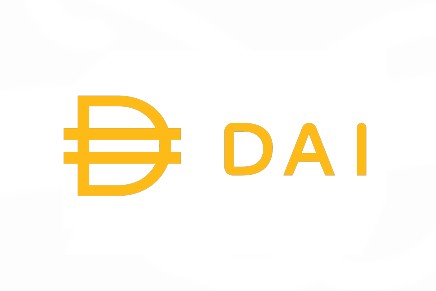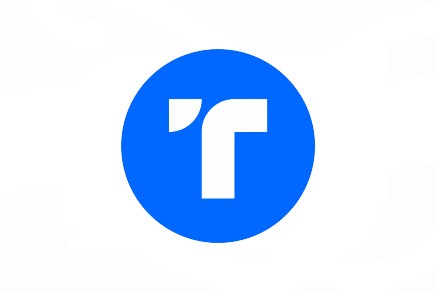Stablecoins are a type of digital currency that, unlike other cryptocurrencies, have their value pegged to that of an underlying asset.
There are several different stablecoins available to you, but which is the best stablecoin to buy now? Well, my guide will inform you of some of the most popular stablecoins on offer.
Also consider: My guide to buy crypto
Remember: this list is not a personal recommendation and does not constitute financial advice. Do not buy these investments solely based on what you read in this article. These picks do not constitute personal recommendations or financial advice.
Top stablecoins to buy in July 2025
Dai is another fantastic stablecoin, pegged to the US dollar by keeping reserves of the world’s second-largest cryptocurrency: ethereum.
When you create and purchase the Dai stablecoin, you are technically also required to buy an equal value of ethereum in US dollars.
This is how the ethereum-based stablecoin, which was developed in 2014 as a decentralized autonomous organization (DAO), attempts to maintain a 1:1 value to the price of the US dollar, also known as being “soft pegged”.
This gives Dai an extra level of security, as ethereum typically experiences more market volatility than the US dollar, meaning it may be better placed to withstand crashes in the crypto world.
As you would expect, the value of Dai has remained relatively close to the value of the US dollar throughout its existence.
Indeed, it reached highs of 1.094 on 14 March 2020, and lows of 0.97 on 23 March 2020.
One of the great things about Dai is that, since it is backed by crypto assets, crypto investors can convert Dai into ethereum during times of increased volatility.
Yahoo Finance reports that Dai’s market cap was $5.7 billion as of 24 November 2022.
Don’t invest unless you’re prepared to lose all the money you invest. This is a high‑risk investment and you should not expect to be protected if something goes wrong. Take 2 mins to learn more.
One of the earliest stablecoins and potentially the most well-known is Tether.
In fact, according to Yahoo Finance, Tether is the largest and most actively traded stablecoin on the market, with a market cap of $65.3 billion as of 24 November 2022.
The Tether stablecoin is a fiat-backed currency, meaning it is pegged to the value of a traditional currency – in this case, the US dollar.
This means that the stablecoin aims to stick to a 1:1 value to the US dollar, much like other fiat-backed currencies.
While Tether is essentially pegged to the value of the US dollar, it is backed by a range of different assets for added security and stability. This includes:
- Traditional currency
- Bonds
- Commercial papers, such as promissory notes and certificates of deposit (CDs).
Don’t invest unless you’re prepared to lose all the money you invest. This is a high‑risk investment and you should not expect to be protected if something goes wrong. Take 2 mins to learn more.
TrueUSD is another type of fiat-backed stablecoin that offers stability in typically volatile markets.
The coin, which was launched in 2018 by the trading platform TrustToken, is reportedly very transparent, giving investors in-depth information about its reserves and supply.
Since TrueUSD operates on the ethereum blockchain, it can use the wallet infrastructure and smart contracts offered by the tried and trusted software, which has provided a solid foundation for the stablecoin to grow.
If you desire high liquidity, then TrueUSD may be for you – the stablecoin is one of the most liquid available on the market.
One thing to note about TrueUSD is its lower market cap compared to other popular stablecoins. Yahoo Finance reports that, as of 24 November 2022, TrueUSD’s total market cap stood at around $743 million.
Despite its lower market capitalization, TrueUSD is issued by a reputable operator, which is one of the most important aspects to look out for before you invest in a stablecoin.
Don’t invest unless you’re prepared to lose all the money you invest. This is a high‑risk investment and you should not expect to be protected if something goes wrong. Take 2 mins to learn more.
USD Coin (USDC) is often pointed to as one of the best stablecoins available on the market thanks to its transparency and integrity.
The fiat-backed stablecoin has successfully built credibility by focusing heavily on regulation. In fact, the reserves held to back the coin are audited monthly by an independent accountancy company to confirm that the currency is sufficiently backed.
Better yet, anyone can access these auditing reports, which offers investors unparalleled transparency. As a result, it is the second largest stablecoin available behind Tether.
Indeed, Yahoo Finance reports that, as of 24 November 2022, USD Coin’s total market cap stood at around $43.8 billion.
Another brilliant aspect of USD Coin is the infrastructure in place to support the stablecoin. For example, investors can transfer USD Coins between accounts to other users, much like making traditional bank transfers.
Find out how to buy USDC using Coinbase in my fully explained, step-by-step guide.
Don’t invest unless you’re prepared to lose all the money you invest. This is a high‑risk investment and you should not expect to be protected if something goes wrong. Take 2 mins to learn more.
Launched by the Binance trading platform, the eponymous fiat-backed stablecoin Binance USD (BUSD) is typically pegged to the value of the US dollar.
Like other similar coins, such as Pax Dollar, the Binance USD stablecoin is supposed to be exchanged at a 1:1 ratio to the US dollar. This is because each BUSD coin is backed by dollar reserves.
In fact, since its inception in 2019, the Binance USD stablecoin has remained true to its purpose, reaching an all-time low of 0.9993 on 11 August 2022, and an all-time high of 1.0284 on 11 October 2022, according to the investing.com website.
One of the brilliant aspects of investing in the Binance USD stablecoin is its lack of transaction fees. If you trade it on Binance’s own platform, no fees are required when you do so.
Better yet, the Binance exchange allows you to trade BUSD for other cryptocurrencies. Having its own exchange, as well as being regulated by the New York State Department of Financial Services, also gives the stablecoin an additional layer of security. This ensures it sticks to the 1:1 ratio to the US dollar as closely as possible.
According to Yahoo Finance, BUSD’s market capitalization (market cap) stood at $22.86 billion as of 24 November 2022.
Following the halt to the minting of new Binance USD tokens as ordered by US regulators, and the subsequent outflows on the cryptocurrency exchange, we are unable to recommend Binance at this time.
Please note
The value of your investments (and any income from them) can go down as well as up and you may not get back the full amount you invested. Past performance is not a reliable indicator of future performance. Investments should be considered over the longer term and should fit in with your overall attitude to risk and financial circumstances.
More about the best stablecoins on offer
As you can see, there are several different stablecoins available on the market.
Each of the top stablecoins comes with its own set of features and benefits, so before you invest in one, use my guide to help you decide which stablecoin best suits you and your investment strategy.
Which stablecoin is the best to invest in?
Technically, there is no “best” stablecoin to invest in, as each comes with different benefits and downsides.
For example, if you wanted to invest in a stablecoin with a large market cap, you may want to consider purchasing Tether.
Though, safety should also be of concern, and Tether is reportedly not as transparent as some other stablecoins. The USD Coin, on the other hand, is far more transparent, as it offers investors access to a monthly audit to confirm its reserves.
Also, different stablecoins are backed by different assets; if you would prefer to invest in a stablecoin that is backed by a fiat currency, such as the US dollar, you may want to consider purchasing the USD Coin or Binance USD.
Or, if you are happy investing in a stablecoin that is backed by typically more volatile cryptocurrencies, then you may want to think about investing in the ethereum-backed stablecoin, Dai.
What are stablecoins?
Stablecoins are essentially a type of cryptocurrency in that they are a form of digital currency, though there are some distinct differences that separate the two.
Unlike traditional cryptocurrencies, stablecoins have their value pegged to a particular asset in an attempt to limit some of the volatility that is often seen in typical crypto trading.
In fact, the cryptocurrency market often experiences extreme volatility at times – according to Yahoo Finance, bitcoin’s value skyrocketed from around $5,000 in March 2020 to more than $63,000 just over a year later in April 2021.
Meanwhile, stablecoins attempt to stick to the value of their underlying asset as much as possible – you will typically see that the value of stablecoins will only stray very slightly from its backed asset. Though, you should keep in mind that stablecoins can sometimes experience volatility depending on market conditions.
This is achieved by “pegging” the value of the stablecoin to a particular asset, though some, such as an algorithmic stablecoin, use software to regulate the price. You can read more about the different types of stablecoin further in my guide.
For example, a fiat-backed currency is typically pegged to the value of a traditional currency used in our day-to-day lives, usually the US dollar. Stablecoins will attempt to stick to a 1:1 value to its pegged currency by maintaining a reserve of assets that act as collateral and balance out the value of the stablecoin.
Also, algorithmic formulae are used to help control the supply of the stablecoin.
How do you make money from stablecoins?
Of course, investors typically make money from volatility; when price swings occur, you will typically be looking to capitalise on price swings by selling your stake when the price increases. So how do you make money from investing in stablecoins?
Well, there are several ways you as an investor can make money by trading stablecoins. One of these methods is through interest. This works much like bonds in that you purchase a set amount of stablecoins, and after a set period of time, you are paid back your initial investment plus any accrued interest. This is a fantastic way to invest if you wish to earn an income passively.
Another popular method of earning an income from stablecoin trading is by “staking”. This is when you lock in your stablecoins to ensure the algorithm the currency circulates on operates correctly, and the issuer will pay you for it. While you are essentially purchasing stablecoins when you stake, you can’t access them.
Though, when you stake, you are typically given a chance to earn rewards, including voting rights on the network or mining perks.
While the returns from staking may be slightly lower than other forms of investing, the method typically offers guaranteed interest if the issuer continues to operate.
What are the different types of stablecoin?
As previously mentioned, there are several different types of stablecoins available for you to invest in. While they all typically operate in similar ways, the difference between them is how they are backed.
But what are the different types of stablecoin? And which is the best? Well, continue reading my guide to discover everything you need to know.
Fiat-backed stablecoins
Fiat currencies are traditional forms of money that are typically used as national currencies, such as the US dollar, GBP, or the Chinese yuan.
So, as the name suggests, a fiat-backed stablecoin is a digital, decentralised currency that is backed by more traditional currencies.
Fiat-backed stablecoins are potentially one of the most popular stablecoin varieties. They attempt to maintain a 1:1 level against their backed currency by keeping a cash reserve.
For example, Binance USD is a fiat-backed stablecoin, and according to reports from the Paxos website, the stablecoin had a total of more than $850 million in total cash deposits in October 2022.
Since fiat-backed stablecoins aren’t backed by other cryptocurrencies, they’re considered “off-chain”. This is because they don’t operate on the blockchain.
Crypto-backed stablecoins
You may also find that several stablecoins are backed by another crypto asset and are conveniently referred to as “crypto-backed stablecoins”.
As you can imagine, these stablecoins are considered “on-chain”, since they operate within the blockchain.
Since the crypto space tends to be more volatile than traditional fiat currencies, crypto-backed stablecoins will tend to keep an over-collateralized position by keeping a larger reserve of the stablecoin’s backed cryptocurrency.
This results in the crypto-backed stablecoin having a lower supply compared to its reserve, which can hedge against any volatility the underlying digital assets may experience.
For example, a crypto-backed stablecoin may only issue $500 worth of coins for every $5,000 worth of cryptocurrency in reserve. This is unlike fiat-backed stablecoins that aim to keep a 1:1 ratio of issued coins to cash reserves.
Commodity-backed stablecoins
There are also commodity-backed stablecoins. As the name suggests, these are a type of stablecoin that is backed by a particular physical commodity.
Typically, commodity-backed stablecoins will hold hard assets, such as physical gold, as a reserve behind the stablecoin. For example, the Paxos Gold stablecoin is pegged to the value of one fine troy ounce of gold in the London Good Delivery market.
Though, many stablecoin issuers may attempt to diversify their reserves by holding several different commodities, ranging from metals to real estate.
It’s worth keeping in mind that commodity prices tend to fluctuate depending on market conditions and geopolitical situations. For this reason, you may find that commodity-backed stablecoins can sometimes be slightly more volatile than other forms of stablecoin.
One of the main benefits of commodity-backed stablecoins is its “asset tokenization” of precious metals and other commodities.
Since holding physical assets, such as gold or silver, is often expensive to buy and store, having a coin that symbolises the commodity allows investors to essentially take possession of the underlying resource in the form of a digital coin.
You can then typically exchange your coin for the underlying commodity, or for cash equivalents when the price has increased.
Seigniorage-style stablecoins
A seigniorage-style stablecoin, which is commonly referred to as a “fractional algorithmic stablecoin”, differs slightly from the other forms of stablecoin in the way that it is backed.
This is because an algorithmic stablecoin bases its price stability on specialised algorithms and “smart contracts”. These smart contracts are essentially programs and processes stored on the blockchain that automatically run when certain conditions are met.
This provides a level of security to investors, as the smart contract will typically execute trades and inform both parties of the exact outcome without the need for a third party to operate the trade.
The algorithms that these stablecoins operate from will typically reduce the number of coins on the market when the price falls below that of its underlying asset. Inversely, if the value of the stablecoin climbs too high above its underlying asset, the algorithm will issue new coins into circulation.
This is how the prices of algorithmic stablecoins are monitored and kept as close to a 1:1 value compared to its underlying asset.
What is the best type of stablecoin?
Technically, there is no “best” type of stablecoin, as they all operate in a similar way – they will use an asset as a reserve to regulate the price and maintain a 1:1 ratio (or leveraged, in the case of crypto-backed stablecoins) as much as possible.
Despite this, you will find that fiat-backed stablecoins, such as Tether or Binance USD, are some of the largest and most traded stablecoins on the market. Since fiat currencies, such as the US dollar, tend to be far more stable than other assets, such as cryptocurrencies and commodities, this could offer an extra layer of stability for investors.
What risks are involved with stablecoin trading?
Like most forms of investing, stablecoins aren’t completely free from risk. There are several different issues you should keep an eye out for when you invest in stablecoins, so continue reading to find out what these risks are, and how to counter them.
Security risks
One of the most prominent issues with stablecoins, and in fact cryptocurrencies as a whole, is digital security.
Since your stablecoins and other forms of cryptocurrencies are completely digital and are held online, hackers may attempt to steal stablecoins from investors.
One of the ways you can alleviate security risks is with the type of wallet you store your coins in.
For example, a “hot wallet” is typically an online storage place, which means hackers can potentially access your wallet, while a “cold wallet” is a wallet that isn’t connected to the network, such as a USB drive. That means storing your stablecoins in a cold wallet makes it far more difficult for them to be accessed by others.
Reserve risks
To function as intended and stick to the value of their underlying assets as closely as possible, a stablecoin typically needs to hold a reserve of the asset to balance out the price of the coin.
So, one of the big risks with several stablecoins is if the issuer isn’t holding adequate reserves to maintain the coin’s price. This may occur if the issuer isn’t wholly transparent with their reserves; for example, Tether was accused of being not as transparent as other forms of stablecoin.
Indeed, the Coindesk website states that the issuers of Tether were fined more than $42 million in October 2021, and it was found that they were holding $286 million worth of unreported US Treasury bonds.
Unfortunately, there is little you can do to mitigate reserve risk – before investing in a stablecoin, you should do adequate research into the issuer, as they should typically offer reports on how much they hold in reserve.
If the stablecoin isn’t sufficiently backed by an asset, this could cause the coin to lose its pegged value against the targeted asset, or collapse altogether. One example of this is the TerraUSD stablecoin, which wasn’t sufficiently backed and subsequently collapsed as traders lost confidence in the coin.
What is the safest stablecoin?
The “safest” stablecoin is a point of contention, as different people will have differing preferences.
For example, some may consider the USD Coin as the safest stablecoin since it is backed by a fiat currency – in this case, the US dollar – has a large market cap, and is issued by the trusted source, Coinbase.
Or, some may consider Dai to be safer since it isn’t controlled and operated by a centralised issuer, thus making it less susceptible to crashes or attacks.
Overall, the safety of a stablecoin depends on how you define safety in the first place.
Best Stablecoin to Buy Now FAQs
Which stablecoin has the highest supply?
Are stablecoins a good investment?
Stablecoins can be a good investment depending on your reasons for investing in the first place. If you would prefer to earn a passive income over a longer period of time, then stablecoins may suit you, as they tend to offer investors annual interest.
Also, if you want to invest in cryptocurrencies but are deterred by the levels of volatility that are often seen in the crypto market, stablecoins can offer a more secure way to gain exposure to the digital currencies.
The value of your investments (and any income from them) can go down as well as up, and you may not get back the full amount you invested.
Past performance is not a reliable indicator of future performance. Investments should be considered over the longer term and should fit in with your overall attitude to risk and financial circumstances.





